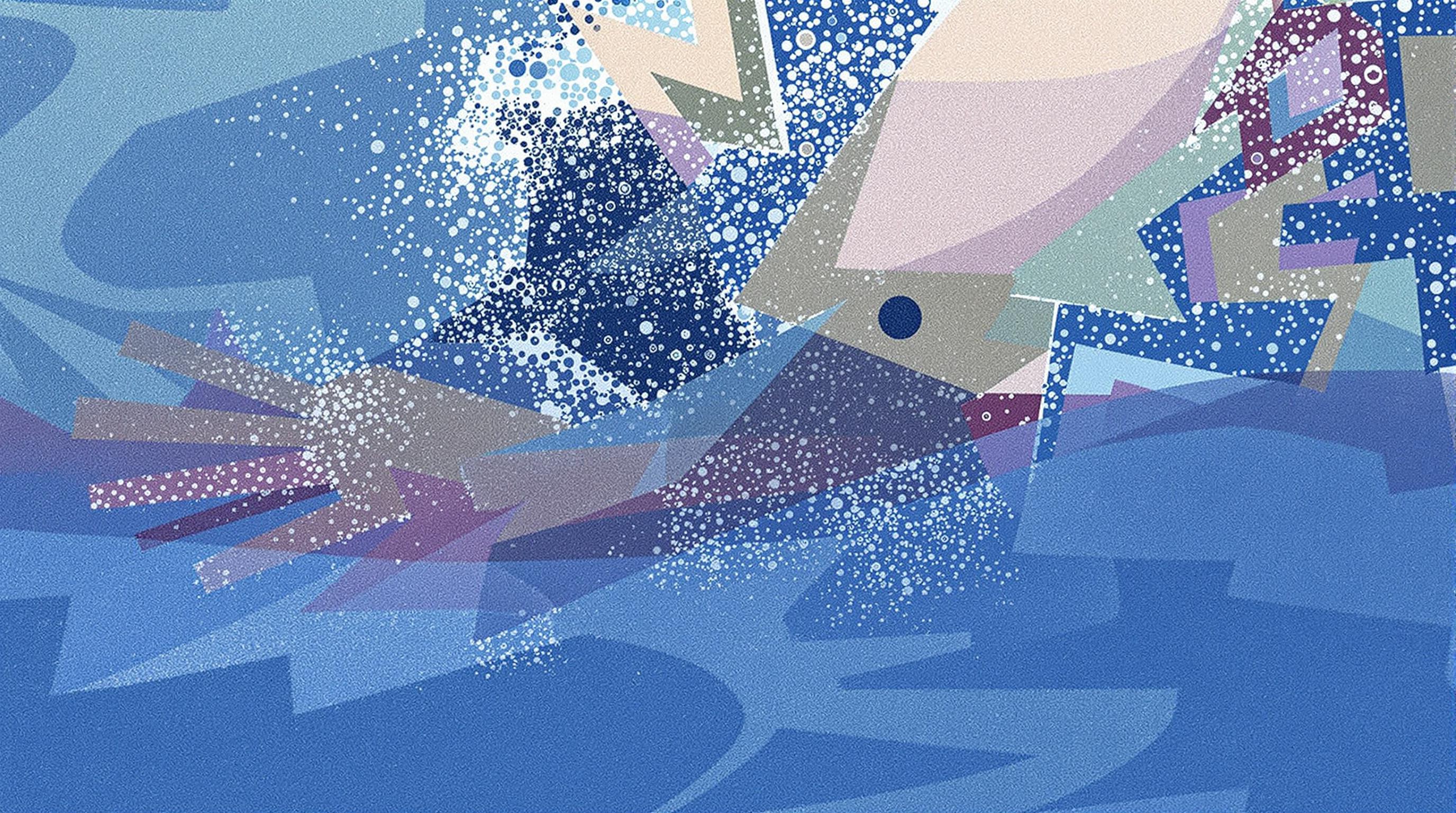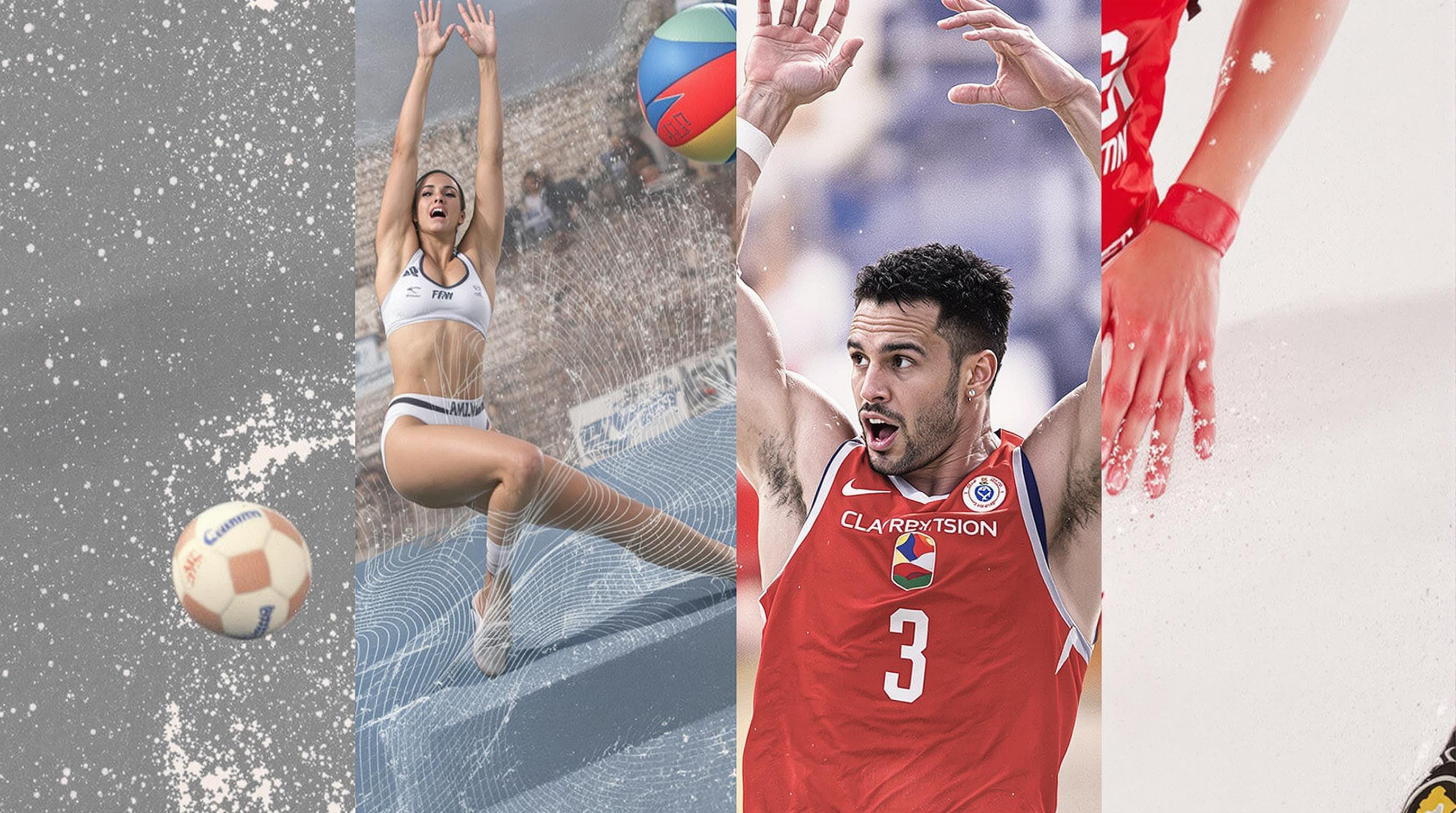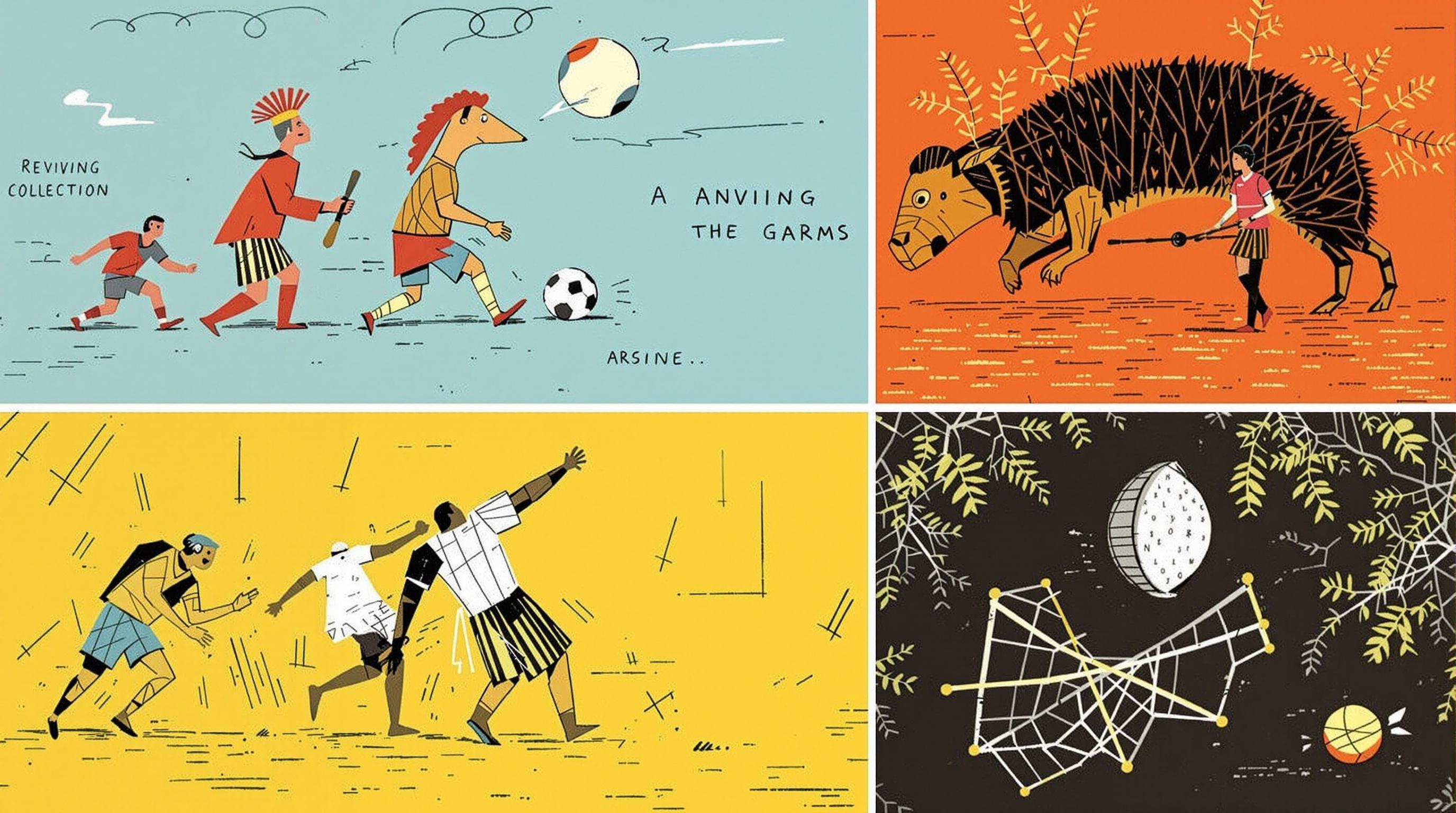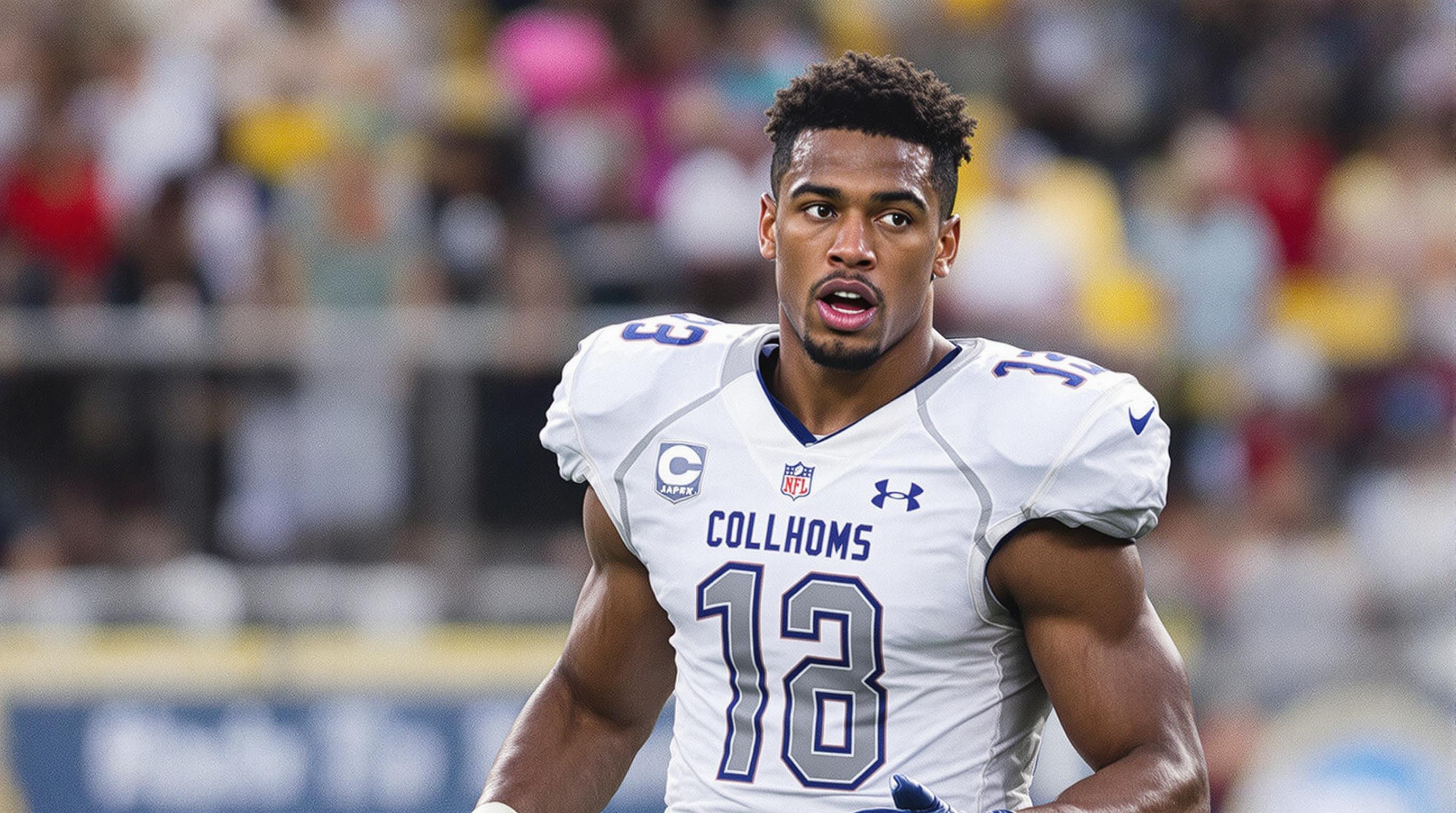Related Articles
- Cultural Collisions: How Colonialism and Conquest Transformed Games and Their Rules Across Continents
- The Eccentric Anomalies of Game Etiquette: Odd House Rules That Defied Generations
- Unveiling the Unconventional: The Role of Secret Societies in Shaping Game Regulations Across Time
- Revisiting the Cultural Phenomenon: How Iconic Championships Influenced Fashion Trends on and off the Field
- Revisiting the Aftermath: How Championship Wins Shape Community Identity and Local Economies
- The Role of Unexpected Weather Events in Shaping Championship Outcomes: A Tidal Wave of Influence
Beneath the Surface: How Ancient Games Are Inspiring Modern Athletes to Reconnect with Roots and Redefine Sportsmanship
Beneath the Surface: How Ancient Games Are Inspiring Modern Athletes to Reconnect with Roots and Redefine Sportsmanship
The resurgence of ancient games is transforming modern athletics, as athletes rediscover the roots of sportsmanship and community. Through a blend of tradition, culture, and physicality, these ancient practices are inspiring a new generation to redefine what it means to compete and connect.
The Roots of Sportsmanship
Sportsmanship, once a cornerstone of athletic culture, often gets buried under the weight of hyper-competition and commercialization. In this context, ancient games shine like beacons, reminding us how sports once served as communal gatherings rather than just battlegrounds for individual glory. According to a survey from the Sports and Fitness Industry Association, more than 75% of youth athletes believe teamwork and camaraderie are as important as winning. This sentiment echoes the philosophies behind games like Native American Lacrosse or Mesoamerican Ulama, where the story went beyond mere competition.
Uncovering Cultural Significance
Beneath the surface of simple play lies a rich tapestry of cultural significance. Take, for instance, the Ancient Greek Olympics. Originally held as a tribute to Zeus, these games were steeped in rituals that emphasized honor, friendship, and fair competition. Events ranged from wrestling to chariot racing, showcasing not only physical prowess but also a deep respect for tradition. This connection to culture is resurgent, particularly among Millennials and Gen Zers who seek deeper meaning in their athletic pursuits.
The Case of Kalaripayattu: A Living Art
One ancient game making waves is Kalaripayattu, a martial art from Kerala, India. With its roots dating back over 3,000 years, practitioners believe Kalaripayattu is not just about fighting; it’s a form of art that demands respect for one’s opponent and one’s self. Recent studies suggest that training in such ancient martial arts fosters not just physical agility but also mental concentration and cultural pride, contributing to better performance in modern sports contexts (Source: The Journal of Asian Martial Arts, 2023). Athletes, particularly in mixed martial arts (MMA), are beginning to integrate principles from Kalaripayattu into their training regimens.
Digging Deeper: How Modern Athletes are Embracing Ancient Games
Modern athletes, restless amidst contemporary pressures, are looking back to rediscover what play meant long before commercial sponsorships and social media hype. Icons like LeBron James and Serena Williams are known to visit local games during their travels, embracing various forms of traditional play in different cultures. James famously joined a basketball tournament in Africa, experiencing local styles that highlighted community and collective joy. Such experiences inspire athletes to blend competitive excellence with cultural appreciation, creating a more enriching environment.
A Shift in Perspective: From Winning to Widening
Humor often shines through when athletes recount their experiences with ancient games. Take the modern-day “Tug of War” championship, where competitors sometimes resort to playful banter to distract opponents. “It’s all in good fun,” chuckled a participant in a recent competition, “but I swear, the ropes have a mind of their own!” This light-hearted approach embodies a significant shift—from a singular focus on winning to an appreciation for the joy of the game itself.
Statistics that Matter
Research from the Pew Research Center indicates that approximately 67% of young people today express a desire to reconnect with their heritage through sports. Many find inspiration in the ancient games from their ancestry, leading to a unique amalgamation of tradition and modernity. Take, for example, the rise of fun runs like the Color Run, which delightfully combine competitiveness with community spirit—much like the games that preceded them.
Games Beyond Borders: The Unifying Force
Not only do ancient games remind athletes of their roots, but they also serve to unite individuals across various cultures. Consider the game of Kabaddi, a traditional Indian sport that emphasizes teamwork and strategy. International Kabaddi tournaments draw participation from countries including India, Pakistan, and Iran, creating a communal bond despite diverse backgrounds. These games challenge the “us against them” mentality and foster collaboration and respect among athletes—qualities that are vital for today’s globalized world.
Storytelling in Sports
Every ancient game comes with its unique narratives. The captivating stories of heroes and legendary athletes not only entertain but provide moral lessons. For instance, the tale of the Greek hero Milo of Croton, who carried a bull on his shoulders, teaches perseverance and strength. Furthermore, young athletes today continue to seek motivation from these anecdotes, often sharing them in social media posts, thus blending storytelling into their training regimes.
Community Engagement and its Importance
Incorporating ancient games into community events has proven beneficial as well. Events like the Down the Rabbit Hole Games, held in Oregon, blend ancient traditions with modern fitness cultures, attracting over 5,000 participants annually. With a 50% growth rate each year, these events not only promote physical health but also facilitate community engagement, demonstrating that the ancient values of togetherness are very much alive.
Personal Growth and Development
Beyond competition, ancient games foster personal growth. They teach humility, resilience, and respect—values sometimes lost in today’s fast-paced sports world. A powerful example is Seeniperath, a traditional form of wrestling in Mongolia, where competitors must show respect and gratitude after a match, regardless of the outcome—a lesson modern athletes like Tom Brady and Stephen Curry have espoused. “It’s not just about the scoreboard,” Brady once said. “It’s about what we learn along the way.”
Redefining the Modern Athlete
The essence of a modern athlete is increasingly shaped by not only competition but also ethics and legacy. As the astute philosopher and coach John Wooden famously said, “Sports do not build character. They reveal it.” The ancient games remind us of what character truly entails—a notion that boards rooms and locker rooms alike are recognizing. The drive today is no longer just to heft a trophy; it’s about enshrining values in our global sports narrative.
Bridging Generational Gaps
An intriguing aspect of embracing ancient games is the bridging of generational gaps in sports. Younger athletes gain wisdom from older generations who have experienced these traditional games, fostering respect and understanding. An example lies in communities that engage grandparents in teaching local sports. The entwined stories create intergenerational bonds, capturing emotions that go beyond the mere act of playing. 77% of athletes surveyed said that engaging with older athletes helped them gain a new perspective on competition and camaraderie (Source: National Sports Academy, 2023).
The Future of Sportsmanship
As we look to the future, the integration of ancient games into modern sports culture offers promise. This revival fosters a generation of athletes who stride into the arena, not just with physical prowess, but a resounding sense of identity and purpose. This complex layering of respect for history amidst the exhilaration of competition creates a unique sportsmanship renaissance. Inculcating these ancient values helps athletes transition smoothly into community leaders, advocating for a culture where success transcends silverware.
In conclusion, with every ancient game that finds its way back into the modern arena, we embrace an opportunity—for athletes to rediscover who they are. The essence of competition evolves, rooted not merely in winning but in respect, legacy, and collective joy. Whether you’re cheering from the sidelines or participating, the heartbeat of our athletic community beats stronger when echoing the rhythms of our ancestors. Let’s celebrate these age-old traditions, for they may very well shape the future of sports.




